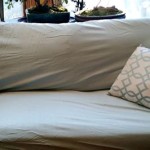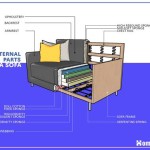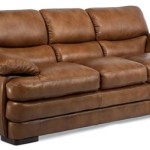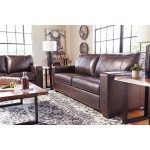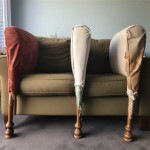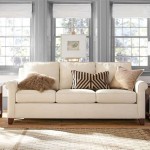Corduroy Sofa Material: A Comprehensive Overview
Corduroy, a fabric characterized by its distinctive raised "cords" or ribs, has a long and varied history, evolving from workwear to a cherished material in both fashion and interior design. Its unique texture and visual appeal have made it a popular choice for upholstery, particularly for sofas. Understanding the properties, advantages, and considerations associated with corduroy as a sofa material is crucial for homeowners and designers seeking to incorporate this textile into their living spaces.
This article provides a detailed exploration of corduroy sofa materials, examining its composition, construction, performance characteristics, maintenance requirements, and aesthetic qualities. The aim is to offer a thorough understanding of corduroy's suitability as a sofa upholstery option, allowing for informed decision-making when selecting furniture.
Composition and Construction of Corduroy Fabric
Corduroy is typically made from cotton, but it may also be blended with polyester, rayon, or other fibers to enhance its durability, wrinkle resistance, or drape. The defining feature of corduroy is its pile weave construction, which creates the characteristic vertical ribs or wales. These wales are formed by extra sets of yarns that are woven into the base fabric and then cut to create a raised surface. The density of the wales, usually expressed as the number of wales per inch, significantly impacts the fabric's texture, appearance, and durability. Lower wale counts (e.g., 8-10 wales per inch) result in wider, more pronounced ribs, while higher wale counts (e.g., 11-13 wales per inch or higher) produce finer, softer textures. The type of base fabric used, the yarn composition, and the wale count all contribute to the overall quality and performance of the corduroy.
The manufacturing process involves several key steps. First, the ground weave is created, forming the base structure of the fabric. Next, the pile yarns are woven in, creating loops on the surface. These loops are then cut, and the cut ends are brushed to create the raised wales. Finally, the fabric undergoes dyeing and finishing processes to achieve the desired color, texture, and performance characteristics. Different finishing treatments can be applied to improve properties such as stain resistance, water repellency, or wrinkle resistance.
The choice of materials and construction techniques directly influences the suitability of corduroy for sofa upholstery. High-quality cotton corduroy, particularly when blended with durable synthetic fibers, offers a good balance of comfort, durability, and aesthetic appeal. The tightness of the weave and the thoroughness of the finishing processes are also important factors to consider when evaluating the quality of corduroy for upholstery purposes.
Advantages of Corduroy Sofas
Corduroy sofas offer a unique combination of aesthetic and practical advantages that make them a desirable choice for many living spaces. Some of the key benefits include:
Aesthetic Appeal: Corduroy's distinctive ribbed texture adds visual interest and depth to a room. It has a warm, inviting feel that can complement a variety of interior design styles, from traditional to contemporary. The fabric's ability to catch and reflect light creates subtle variations in color and tone, adding to its visual complexity. Additionally, corduroy is available in a wide range of colors, allowing homeowners and designers to select the perfect shade to match their existing décor.
Comfort and Texture: The soft, plush texture of corduroy provides a comfortable seating experience. The raised wales offer a gentle massaging effect, making it a pleasant surface to sit or recline on. The fabric also tends to be warmer than some other upholstery materials, making it a cozy choice for colder climates or seasons.
Durability and Longevity: While corduroy's durability can vary depending on the fiber content and construction, high-quality corduroy can be a relatively durable upholstery material. The closely woven structure and the raised wales provide some resistance to wear and tear. Blending cotton with synthetic fibers, such as polyester, can significantly enhance its durability and resistance to abrasion. Proper care and maintenance can further extend the lifespan of a corduroy sofa.
Hides Wear and Tear: The textured nature of corduroy can help to conceal minor stains, scratches, and imperfections, making it a practical choice for households with children or pets. The pile of the fabric can camouflage small marks, and the variations in color and texture can make them less noticeable than on smoother, solid-colored upholstery materials. However, it is still essential to promptly address any spills or stains to prevent them from becoming permanent.
Adds Character and Warmth: Corduroy brings a sense of character and warmth to a room. Its distinctive texture and vintage appeal can add personality and charm to a living space. It’s an excellent choice for creating a cozy, inviting atmosphere. Furthermore, corduroy can be incorporated into various design styles, from bohemian to mid-century modern, adding a unique touch to any interior.
Considerations and Potential Drawbacks
Despite its advantages, there are also certain considerations and potential drawbacks associated with corduroy sofas that need to be taken into account:
Maintenance Requirements: Corduroy requires regular maintenance to keep it looking its best. The texture of the fabric can trap dust, dirt, and pet hair, requiring frequent vacuuming. Regular brushing can also help to maintain the pile and prevent it from becoming matted. Spot cleaning is essential to address spills and stains promptly. Professional cleaning may be necessary periodically to maintain the overall cleanliness and appearance of the sofa.
Susceptibility to Pile Distortion: Over time, the pile of corduroy can flatten or become distorted, particularly in high-traffic areas. This can result in a worn or uneven appearance. Regular fluffing and brushing can help to minimize this effect, but some degree of pile distortion is inevitable with use. Choosing a corduroy with a higher wale count and a more resilient fiber blend can help to reduce the likelihood of pile distortion.
Potential for Color Variation: Corduroy's texture can create variations in color and tone, which can be either an advantage or a disadvantage depending on the desired aesthetic. While the subtle color variations can add visual interest, they can also make it challenging to match other fabrics or accessories perfectly. It is important to consider the potential for color variation when selecting a corduroy sofa and to carefully coordinate it with other elements in the room.
Cost: The cost of corduroy sofas can vary depending on the quality of the fabric, the construction of the sofa, and the brand. High-quality corduroy, particularly when blended with durable synthetic fibers, can be more expensive than some other upholstery materials. However, the durability and longevity of a well-made corduroy sofa can make it a worthwhile investment in the long run.
Not Ideal for All Climates: While corduroy's warmth can be an advantage in colder climates, it may not be the most comfortable choice for hot, humid environments. The fabric's density can make it feel warmer than some other upholstery materials, which may be undesirable in warmer climates. Consider the climate and the typical temperature of the room when selecting a corduroy sofa.
Cleaning Challenges: While corduroy can hide minor imperfections, it can also be challenging to clean effectively. The textured surface can trap dirt and debris, making it difficult to remove stains completely. It's important to act quickly when spills occur and use appropriate cleaning products and techniques to avoid damaging the fabric. Certain cleaning methods like steam cleaning could damage the pile or cause shrinkage, so it is crucial to consult the manufacturer's instructions before cleaning.
When selecting a corduroy sofa, thoroughly evaluating these advantages and drawbacks is necessary. Consideration for the fabric composition, wale count, and care requirements will contribute to a satisfying and enduring furniture piece.

Making The Case For Corduroy Furniture Architectural Digest

Making The Case For Corduroy Furniture Architectural Digest

Cuboid Corduroy Fabric Dark Green Sectional Sofa

Corduroy Upholstery Fabric With Narrow Cord P M Roll

Cream Corduroy Fabric Dark Green Modern Chaise Sectional Sofa

Corduroy Fabric Corner Sofa For Dining Room Use China Made In Com

Robbie Cloud Corduroy Couch Lifestyle Home

How To Choose The Best Upholstery Fabric For Your Sofa Rose And Grey

126 38 In W Square Arm Modern Convertible Corduroy Fabric Straight L Shaped Sofa Comfortable Combination Beige Ec Sfbe 8164 The Home Depot

Home Textile Soft Fabric Stripe Furniture Sofa Cushion Corduroy China And Made In Com

